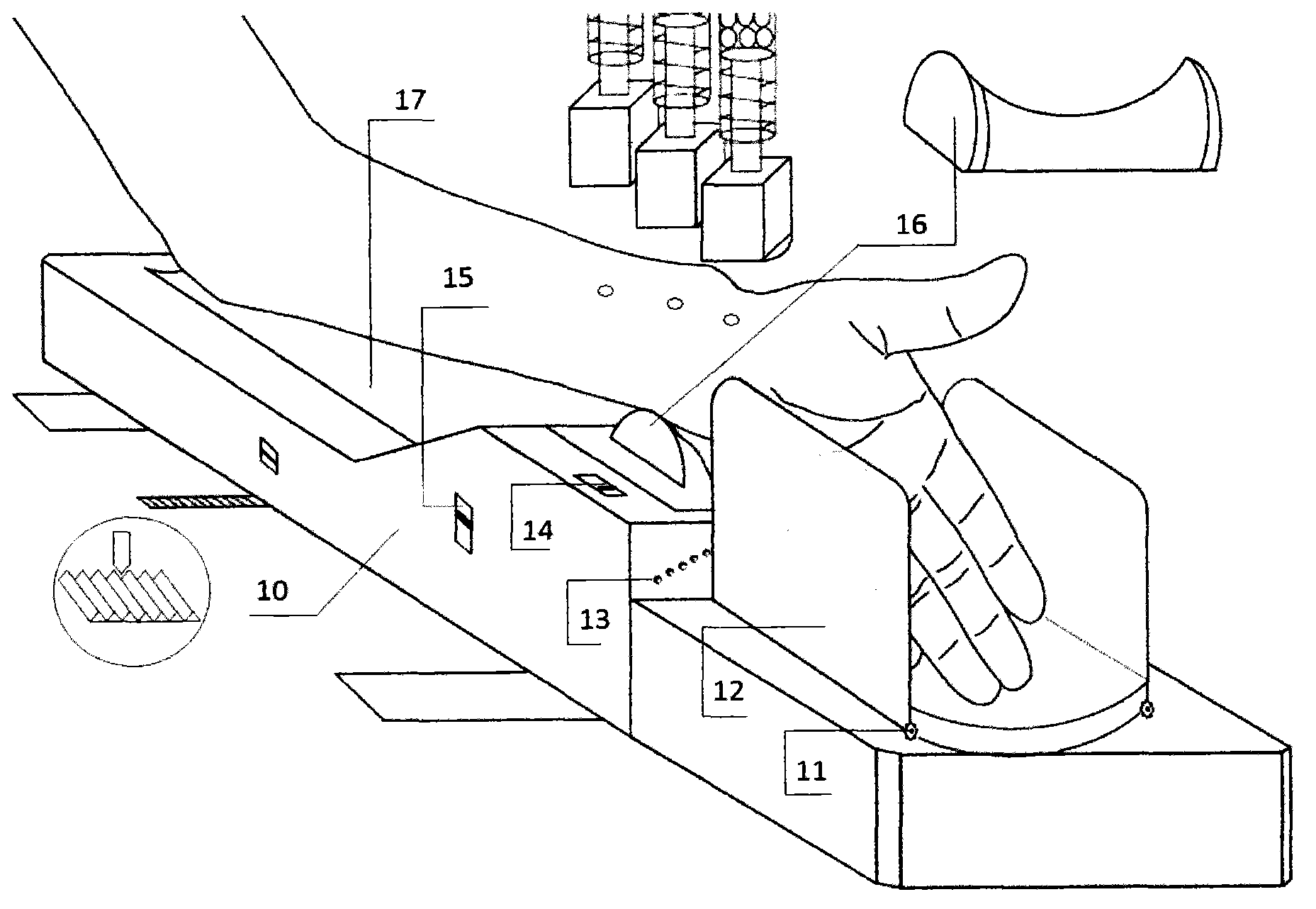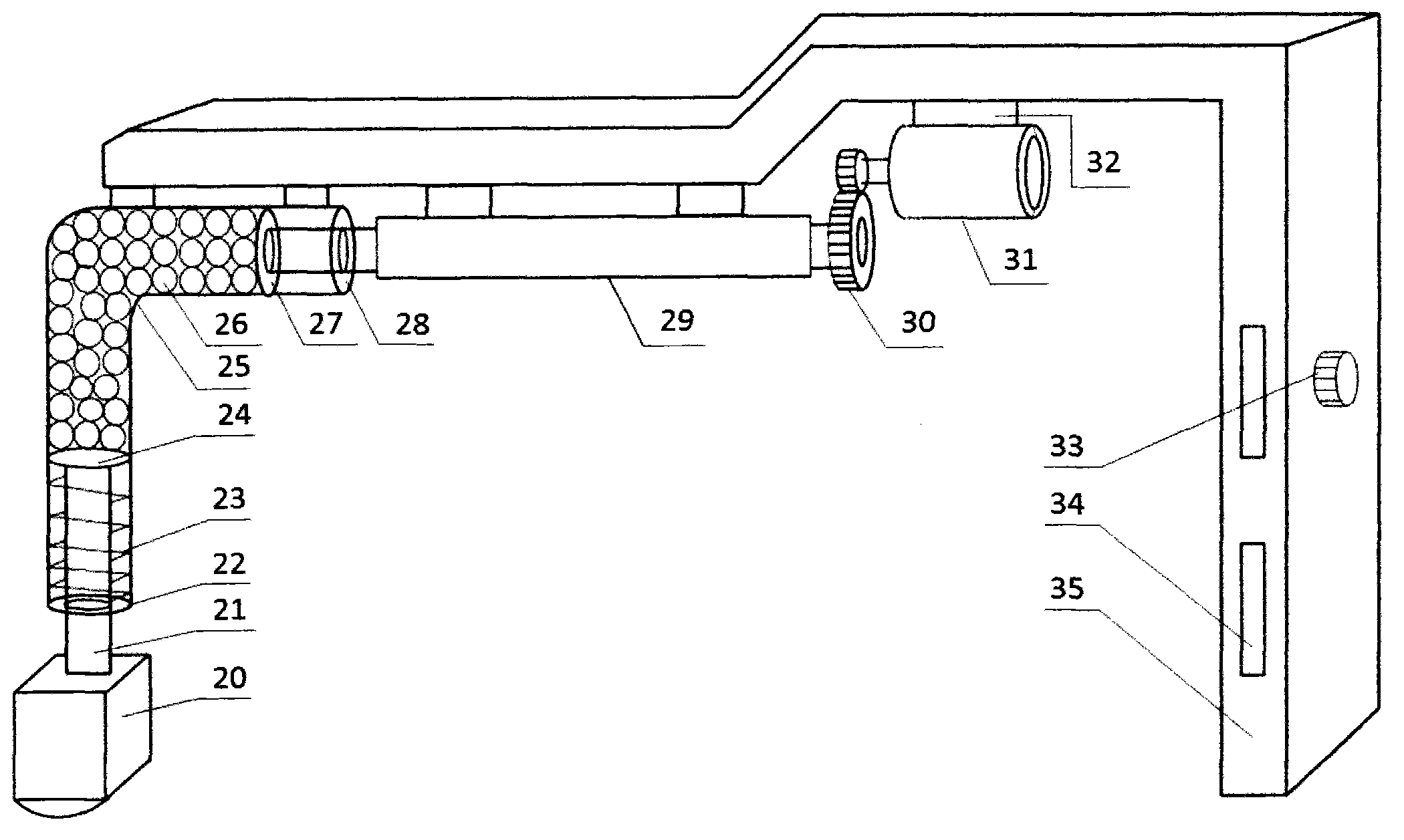Flexible, micro-array and three-portion precision t pulse testing system
A detection system and microarray technology, applied in the field of biomedical detection instruments, can solve problems such as low integration, long detection time, and low consistency, and achieve the effects of improving detection efficiency, saving detection time, and improving repeatability
- Summary
- Abstract
- Description
- Claims
- Application Information
AI Technical Summary
Problems solved by technology
Method used
Image
Examples
Embodiment Construction
[0047] A flexible, microarray, and three-position accurate pulse detection system described in the present invention includes a forearm positioning device, three flexible microarray sensors and matching automatic pressure devices, a sensor component bracket, a base and accessories, and a power supply Supply module, signal acquisition module, signal processing module, signal control module, computer and data storage, display, analysis module, according to the principle of bionics, use the manipulator to accurately simulate the pulse cutting process of the three parts and nine waiting points of Chinese medicine practitioners.
[0048] The sensor used is a graphene capacitive microarray flexible film sensor, which can better adapt to the differences in individual tissue structures and make good contact with the skin tissue at the detection site, avoiding signal distortion caused by poor physical contact.
[0049] The length and width of the sensor are both 10 mm, and 20 pressure-s...
PUM
 Login to View More
Login to View More Abstract
Description
Claims
Application Information
 Login to View More
Login to View More - R&D
- Intellectual Property
- Life Sciences
- Materials
- Tech Scout
- Unparalleled Data Quality
- Higher Quality Content
- 60% Fewer Hallucinations
Browse by: Latest US Patents, China's latest patents, Technical Efficacy Thesaurus, Application Domain, Technology Topic, Popular Technical Reports.
© 2025 PatSnap. All rights reserved.Legal|Privacy policy|Modern Slavery Act Transparency Statement|Sitemap|About US| Contact US: help@patsnap.com



